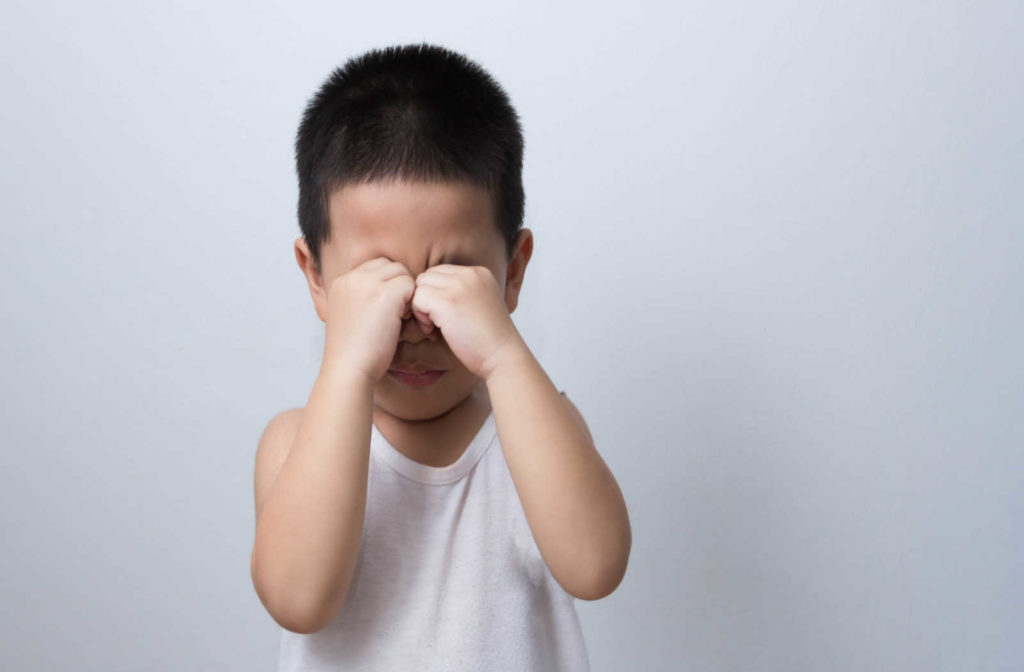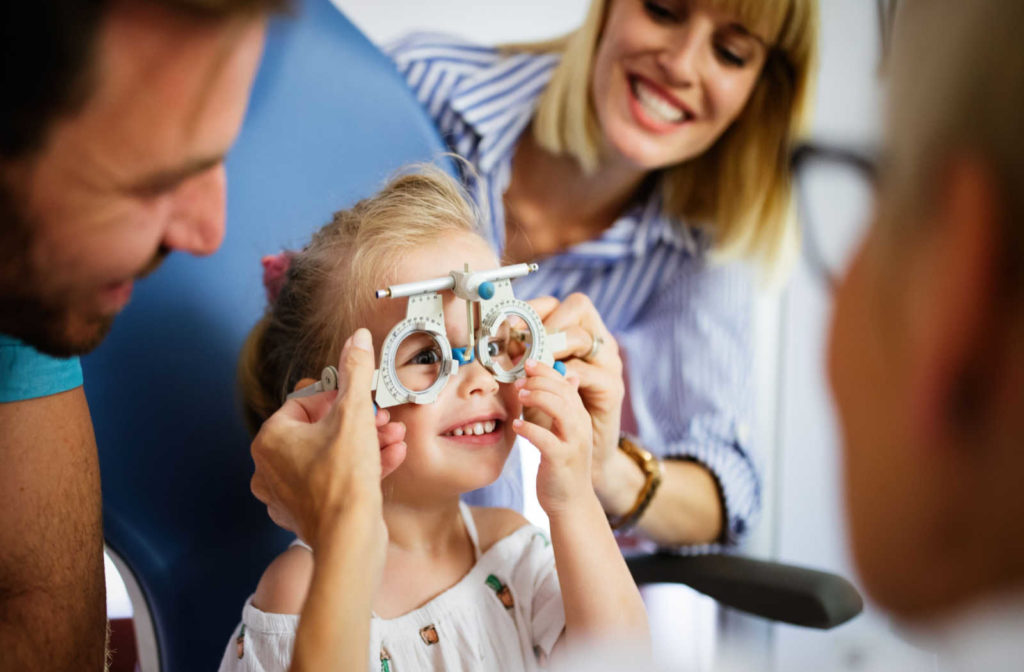When babies are born, their vision continues to develop and change in the first 2 years of their life and beyond. Children’s eyes are vital for reading, writing, watching TV, playing sports, and simply being able to see the world around them.
Comprehensive eye exams provide a good start to your child’s eye health. With an eye exam, experienced eye doctors can detect early eye problems and help prevent them from permanently affecting your vision.
Technically, a baby’s first eye exam is at birth, but it doesn’t stop there. So when should your child have their first eye exam?
Your Child’s Visual Development
Initially, babies can distinguish colors, although they may not be able to tell one color from another. Between 5 and 8 months, they have good color vision, and their visual perception improves.
They can focus on objects 8 to 10 inches away and reach for toys. Vision will continue to improve as babies gain strength, body control, and hand-eye coordination.
The First Eye Exam
Even though young children cannot read an eye chart, we recommend a child’s first eye exam to be at 1 year of age. That way, if there are any problems with their vision, treatment can begin right away. If your child presents any signs of vision problems, please schedule a visit to your optometrist.
Vision Screening
After their first eye exam, children will need another exam before starting school and then annually or as recommended by an optometrist. During the first eye exam, an optometrist will test for the following:
- Nearsightedness: Also known as myopia, children can see up close, but objects farther are blurry.
- Farsightedness: Also known as hyperopia, children can see far away, but close-up objects are blurry.
- Astigmatism: Eye shape is not as it should be and results in blurry vision.
- Amblyopia: Also called lazy eye, where one eye is weaker than the other.
- Strabismus: Also called crossed eye as eyes don’t align or move together.
Signs of Vision Problems
Eye problems in babies are rare and can sometimes even correct themselves as the eyes develop. However, there are other signs to look out for that require an eye exam:
- Excessive tears in one or both eyes can indicate a blocked tear duct
- Red or encrusted eyelids can indicate an eye infection
- Eyes turning in and out may signal crossed eyes
- Highly sensitive to light
- White pupils
- Poor eye tracking
- Head tilting
- Excessive blinking
- Rubbing eyes

Preparing Your Child for Their First Eye Exam
Depending on the age, a child can feel nervous or scared when visiting the optometrist for the first time. We can make your child’s eye exam fun and educational. In addition, here are some tips to make the experience a positive one:
- Explain to them beforehand what will happen during the visit.
- Assure them that it doesn’t hurt.
- Bring a child’s favorite toy along.
- Schedule the appointment at a time when they are well-rested and fed, or bring a snack along.
The Benefits of a Child’s First Eye Exam
During an eye exam, your optometrist will check for the following:
- Eye focus
- Hand-eye coordination
- Clarity of vision
- Peripheral vision
- Color recognition
- Depth perception
- Tracking
- Pupil response
If a child has trouble seeing clearly, waiting too long can affect their learning. An eye doctor can check your child’s eyes and detect possible eye conditions early.
Children this young may not show visible signs of a problem or even know their eyes are not functioning as they should. Experienced eye doctors and screening tests can confirm healthy functioning eyes.
A child is more likely to develop vision problems if there is a family history of eye conditions. This makes their first eye exam even more crucial to confirm, monitor, or treat any related conditions.
Early Detection Saves Vision
Before a child reaches school age, the signs of vision problems or eye conditions are detectable through regular eye exams. With an eye exam, early diagnosis and treatment can improve a child’s performance, attention, focus, and interaction in school and daily living.
Parents know their children best, so if you notice any challenges with their vision or have concerns, don’t delay. Invest in your child’s eye health and book an appointment at Total Vision La Mesa today.



